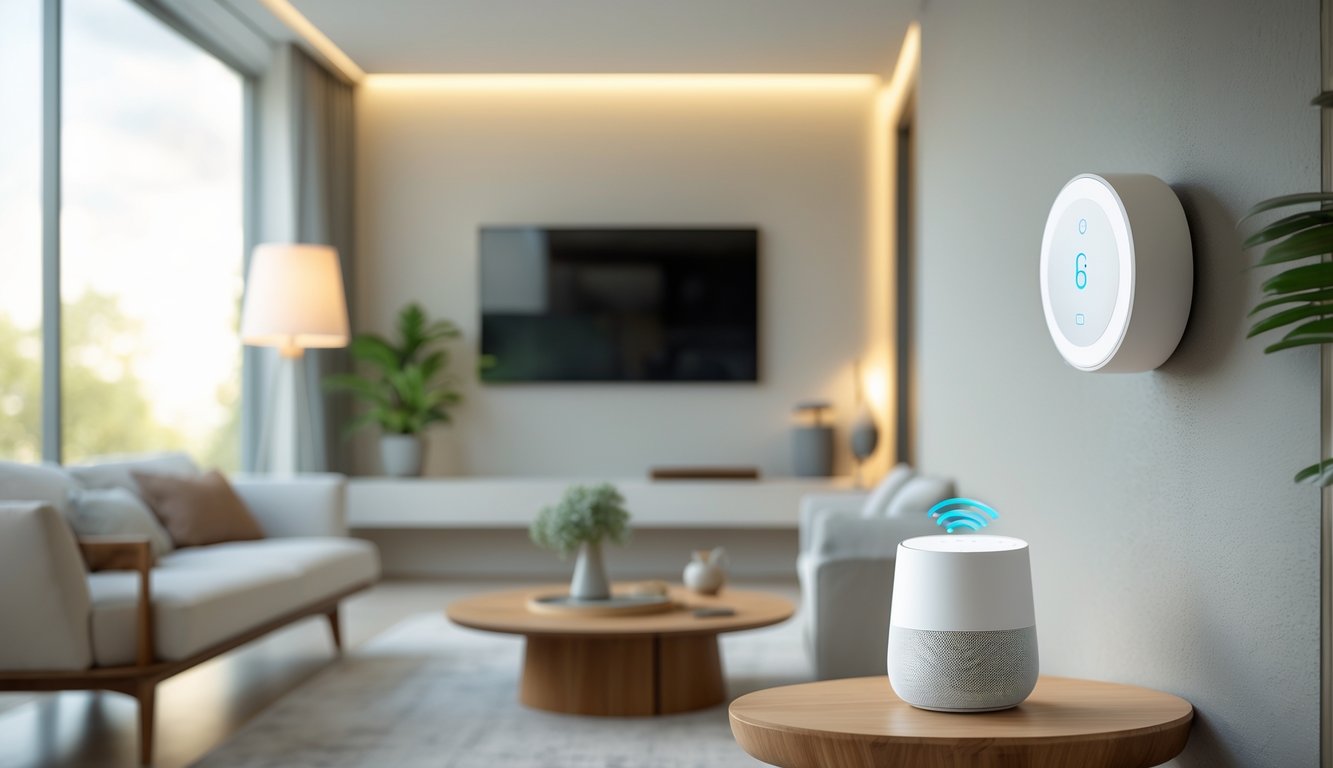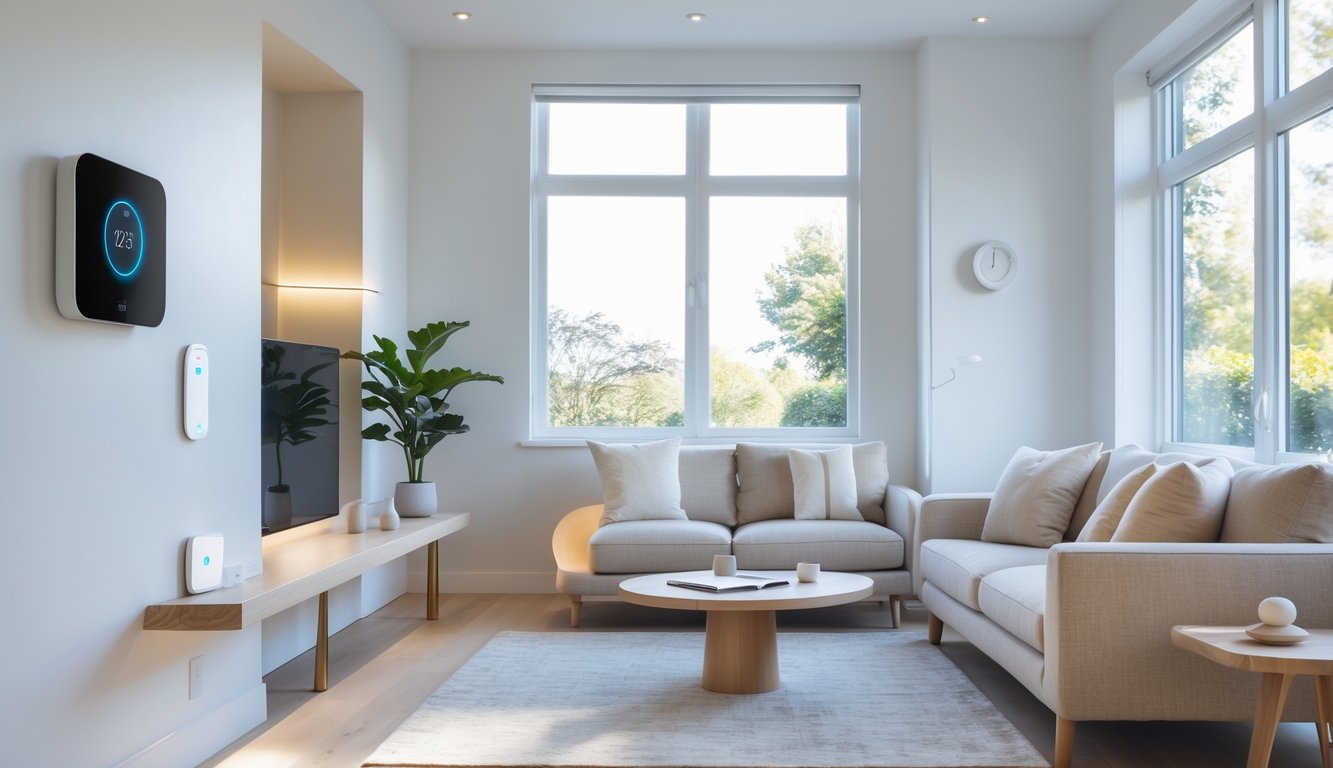
Long-Term Value Vs. Short-Lived Trends
Trends come and go—remember “millennial pink”? Already dead. I tried two “statement walls” for a client—she hated them in six months, paint peeled, money gone. Meanwhile, the smart thermostat I put in five years ago? Still saving her 12% on energy bills (I checked, not making it up).
Personalizing your space is more than monogrammed pillows. Tech lets you dim lights for a migraine or drop blackout shades for a movie. No “room reveal” can compete. Journal of Sustainable Design said last fall that people stick with changes that make life easier, not just better-looking. I mean, nobody brags about app-controlled heating after the first winter, but try living without it once you’re used to it.
Investment, Maintenance, And ROI
The money side cracks me up. People spend hundreds on neon LED strips and peel-and-stick “upgrades,” sometimes paying someone else to install because they know they’ll mess it up. What’s the resale on a TikTok backsplash? I’ve seen Realtors try not to laugh at open houses. Integrated lighting and smart shades never go out of style—they actually help sell the place.
Sure, home tech can look pricey (hubs, outlets, privacy cams), but after a few years, updates happen on their own and you’re not repainting trim every spring. Consumer Reports said last year that homes with good smart tech get 5-8% higher resale. Leopard-print chairs? Not so much. The first time a $40 motion sensor saves you from stubbing your toe at 1 AM, you’ll know it’s money well spent—even if your designer friend is still arguing about accent colors.
Seamless Functionality For Everyday Living

Missing keys, dead phone, dust on the thermostat, a pile of remotes—none of that ever looks good, no matter how many plants you hide it behind. I keep wondering why anyone would choose another “decor swap” over ditching five remotes for one voice command, or the two taps it takes to set up lighting for a 6 a.m. workout. It’s just better when stuff works for you instead of making you rearrange your life (or your kitchen) every season.
Automated Systems In Action
Let me paint a picture: I’m late for a Zoom call, but the blinds already went up, the heat kicked on 15 minutes before my alarm, and my fridge just texted me about expiring chicken (yes, I get poultry reminders now). I saw a Statista study last week—homes with full automation spend 13% less on energy every year. I’d say I don’t care, but my bank account disagrees.
Getting automated security, climate, and energy set up wasn’t actually hard—the worst part was renaming all my Philips Hue bulbs (“Bedroom lamp 1” is now “Stormtrooper Glowstick,” don’t ask). My electrician friend swears motion sensors cut hallway lighting costs by half. But hey, the dishwasher still beeps at 3 a.m. because I set the timer wrong. Tech’s not magic.
Integration With Voice Assistants
Let’s talk about yelling at gadgets. How did we ever live before Alexa or Google Assistant? I can check the weather, set three timers, lock the door, and order detergent, all while elbow-deep in dishwater. Last winter, my Google Home bugged out and played whale noises every night after 8 p.m.—no fix, just whales until spring.
Parks Associates says 40% of US homes now use voice assistants for daily stuff—up from 10% seven years back. That means your neighbor’s light switch probably listens to your grocery list. Alexa butchers my last name, but if you dig into settings, you can set up routines in two minutes and save yourself hours every week. Unless your kid hacks it and makes the lights flash every time you say “pizza.” Parental controls are still a joke.
Smart Lighting And Climate Control Solutions
Didn’t think I’d be sitting here writing about LED bulbs and thermostats, but here we are. Honestly? Dialed-in lighting and temperature control do more to change a space than any moody paint or pillow combo. I don’t care if “sage green” is hot right now—give me lights that actually work for me, not just at me.
Smart Lighting Systems And Natural Light
So, let’s just get this out of the way: “smart lighting” isn’t just yelling at Alexa until your neighbors want to move. I’ve set up occupancy sensors—yeah, I’m that friend—at three different apartments, and they’re paired with wireless LED controllers that actually mess with brightness depending on sunlight, time, or, I don’t know, maybe if the cat walks in. My energy bill? Dropped by half. Maybe 60% if I trust Smart Lighting: The way forward?, but who knows if those numbers are real.
Circadian bulbs—those are the ones that supposedly help your body clock—make mornings less like crawling out of a cave. Some brands try to fake sunrise colors, but I can tell. The bulbs that actually shift color temperature (cool for “focus,” warm for “doomscrolling at 9 p.m.”) feel better. Sometimes, though, they just stay on because the cat’s in the room, and the system thinks that counts as a person. Not flawless, but whatever.
Temperature Control And Smart Thermostats
Thermostats without brains? Useless. I put in a Nest two winters ago. It’s not magic, but it’s obsessed with learning what I do. Got sick for a week, barely moved, and the heat just… did its thing. The Department of Energy claims you can save 10% a year. Not enough to buy a yacht, but hey, it’s something.
Getting each room to the right temp is a pain. Zoned control? Still not there. The thermostat tries to juggle its own sensors, outside weather, and whether I left a window open because I burned dinner again. If you think it’s simple, it’s not—settings fight each other when everyone wants a different temp. Once, I set the bathroom to “Finnish sauna” by accident. Thank goodness for manual override.